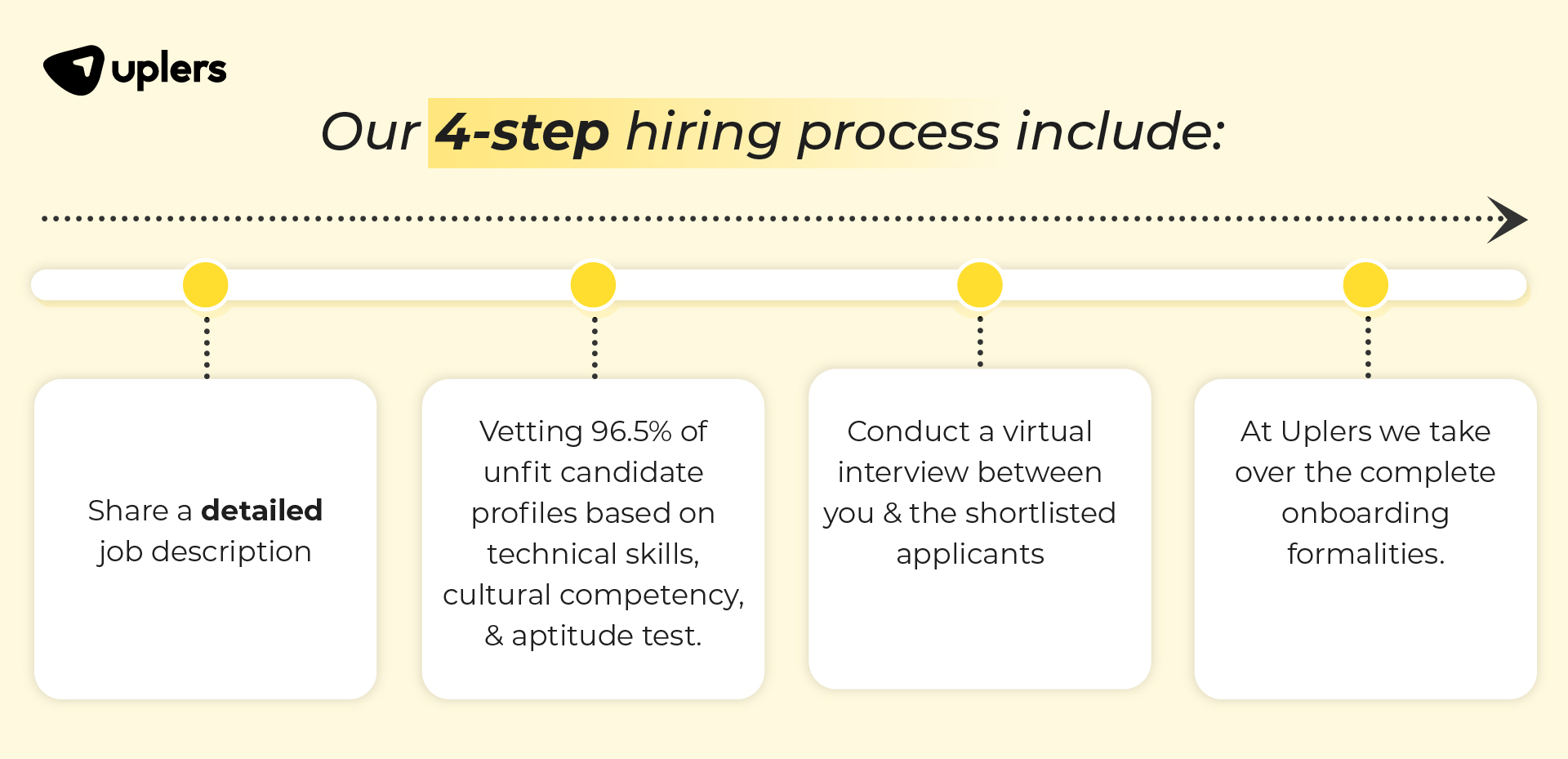10 Essential Skills to Look for When You Hire a Rust Developer
- Prachi Shah
- July 2, 2025
- 4 Minute Read

Let’s first talk about the popularity of Rust among the professional developers community. According to the Stack Overflow Developer Survey 2024, 12.6% of the developers utilize Rust. It’s the go-to language for performance-critical, scalable, and memory-safe applications. From backend services and distributed systems to WebAssembly-powered frontend, the growth of Rust across distinct industry verticals has been nothing short of game-changing.
Rust is a top pick among top global tech companies, SaaS platforms, and infrastructure teams for its zero-cost abstractions, fearless concurrency, and unmatched safety guarantees.
But how can we miss the flip side? To find developers who truly understand Rust is a no-win situation. In this blog, we aim to simplify this for you by outlining the top 10 indispensable skills that you must evaluate when you hire Rust developers. As a result, you will build an engineering team that doesn’t simply write code, but also developers secure and scalable systems ready for the next decade of innovation.
Why Rust Developers Are in High Demand in 2025
The reason for the spike in the hiring demand for Rust developers is both technical and strategic.
- Memory safeguarding without garbage collection.
- Lightning-fast performance that can compete with C/C++.
- Excellent parallelism and concurrency support.
- Rapidly expanding ecosystem that includes embedded development, blockchain, and the web.
From fintechs to cloud providers, tech companies globally now hire Rust developers for powering everything from payment processing and microservices to high-throughput APIs. Additionally, the growing adoption of hiring remote backend developers makes distributed teams a norm. In such scenarios you need to look for developers who can contribute across time zones, scale systems confidently, and bring performance and security to the table.
Strong Understanding of Rust’s Ownership and Borrowing Model
Rust’s memory model is unlike any other, with its ownership, borrowing, and lifetimes making it a safe language. But they also come with a steep learning curve.
Look for candidates who can:
- Explain how Rust prevents data races at compile time.
- Use references and lifetimes fluently.
- Optimize memory management without runtime overhead.
This foundational knowledge is what separates junior Rust coders from production-ready engineers.
Proficiency in Asynchronous Programming with async/await
The async runtime of Rust is highly mature which makes it vital for developers working on networked systems, APIs, or real-time apps to know how to:
- Use async/await syntax correctly.
- Work with runtimes like Tokio or async-std.
- Handle futures, streams, and non-blocking I/O effectively.
Including this, there are various vital skills a backend developer must have to develop scalable API design or event-driven architecture.
Experience with Cargo and Rust Package Ecosystem
Cargo, Rust’s package manager is more than a build tool – it’s a gateway into the vast ecosystem on crates.io.
Ideal candidates must:
- Understand how to properly manage dependencies.
- Assessing third-party boxes for upkeep, safety, and popularity.
- Recognize workspace management and features.
This will reflect not just technical proficiency but also the sound engineering judgement.
Familiarity with Systems Programming and Low-Level Concepts
One of the core strengths of Rust is to give developers fine-grained control over systems while maintaining safety.
Ask your candidates:
- Have they worked on embedded systems, device drivers, or OS-level integrations?
- Do they comprehend bit-level manipulation, stack vs. heap, or pointers?
- If necessary, are they able to write bare-metal, performant code?
These capabilities are especially relevant in IoT, game development, or high-frequency trading contexts.
Knowledge of WebAssembly and Rust’s Role in Frontend
Rust is not a backend language simply. With WASM (WebAssembly) support, Rust is also a viable frontend technology.
Skills you must look for include:
- Experience compiling Rust to WASM.
- Familiarity with frontend frameworks like Yew or Leptos.
- Interoperability with JavaScript and browser APIs
If you are planning to hire web developers who can push forth the limits of frontend performance, Rust-WASM engineers can be an emerging niche with limitless potential.
Ability to Write Safe, Concurrent, and Performant Code
Rust shines bright in environments that demand speed and safety, like cloud services, embedded apps, or blockchain infrastructure.
Key indicators include:
- Use of threads, Arc, Mutex, or RwLock correctly
- Understanding of Send, Sync, and ownership rules in multithreaded contexts
- Optimization techniques (zero-copy, in-place mutations)
An ideal developer should be proficient in building systems where concurrency is a necessity and not a mere luxury.
Understanding of Testing, Debugging, and Benchmarking in Rust
Modern Rust development demands a test-first mindset which is why candidates must be comfortable with:
- Unit and integration tests using Cargo.
- Benchmarking performance with Criterion.rs.
- Using debuggers like LLDB or GDB with Rust integrations.
These skills ensure that your Rust developers don’t just build fast systems – but also build reliable and maintainable ones.
Hands-On Experience with Frameworks like Actix or Rocket
Rust boasts mature frameworks for developing web services, which is why you need to look for developers with the following hands-on experience:
- Actix Web: Known for its blazing-fast performance.
- Rocket: A developer-friendly web framework with strong compile-time safety.
- Middleware integration, routing, and REST/GraphQL implementations.
This is especially fruitful if you as a SaaS company are considering hiring Rust developers for high-throughput web applications.
Version Control and CI/CD Integration
Like present-day engineers, Rust developers need to be fluent in Git workflows, pull requests, and CI/CD pipelines.
Bounty points if they have:
- Integrated Rust projects with GitHub Actions or GitLab CI.
- Written scripts to automate testing and deployment.
- Used Docker or Kubernetes for deployment in production environments.
This is the bottom line if you are building globally distributed teams and need to hire remote developers that can self-manage and integrate into the agile and diverse workflows.
Communication and Remote Collaboration Skills
Technical skills are only one side of the coin. In remote-first environments, soft skills are equally vital.
Key signals include:
- Can they explain complex topics simply?
- Do they write clear, maintainable documentation?
- Are they comfortable working across time zones or async communication tools like Slack, Notion, and GitHub?
Did you know that companies considering hiring Rust developers remotely, prefer hiring platforms like Uplers. Their top 3.5% AI-vetted professionals from India not only have deep technical skills but also excel in collaborative and remote team dynamics.

Final Thoughts: Hiring Rust Developers for Scalable, Future-Proof Engineering
Rust is no longer a language only for compiler developers, but it’s powering production systems at Dropbox, Discord, Amazon, and countless high-growth startups. To unlock its full potential you need to hire Rust developers who understand the language’s unique technical philosophy and architectural patterns of modern software development.
Find developers that code with precision and scale with purpose to experience unmatched performance, safety, and concurrency of this language.






